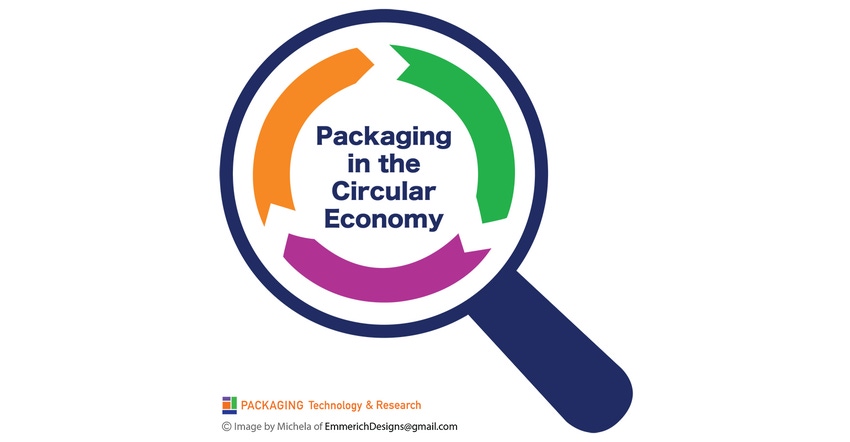Help Fuel US Packaging Circularity by July 4th
Help determine which approved food packaging chemicals remain in use by participating in a focused, anonymous survey to support packaging circularity.
June 21, 2021
“Any discussion on the circular economy needs to focus on additives we use in converting raw materials into packaging.” — Say many packaging professionals
Dear packaging manufacturers and suppliers,
You can help determine which approved food packaging chemicals remain in use by participating in a focused, anonymous survey. Here’s a four-point guide before we inform you what you can do to help the packaging industry tighten and improve a circular economy in the US.
Note: The original deadline of July 4th has been extended to July 20th.
1. We need chemicals to convert all raw materials into packaging.
Chemicals assist in converting raw materials (these include bauxite, iron, fossil fuels, bio-mass, trees, sand, etc.) via blow molding, blown and cast extruding, laminating, and printing into consumer customer-ready food packaging materials.
2. Chemicals are approved for use based on their intended use.
More than 10,000 chemicals are approved for direct food contact worldwide. Some of these chemicals were approved for use in the US as far back as 63 years ago when the Food Additive Amendment of 1958 stated that packaging was considered an indirect additive! The approval of food contact chemicals by various governments and entities varies based on the intended use. For example:
PET water bottles are approved for use with water;
Metal soup can coatings are approved for heat processing in the soup can.
The water and soup pH, oil content, and a host of other factors determine how much of an additive will migrate into food.
Thus, one additive may be approved for use with bottled water and not approved for use with packaging soup. To assess how much of an additive is allowed, the FDA and other global governing bodies use food-simulating liquids (FSLs) to mimic foods such as soup and water and measure migration.
3. Use changes with reuse, recycling and through biodegradation.
When we use post-consumer content packaging, the use may change. For example,
Reuse: When a container is reused for a different product, we may have an additive in a formerly approved high concentration now in contact with a food with which it was not designed to be in contact;
Recycling: Recycled packaging varies in its ability to screen out additives and ensure that only what is allowed for direct food contact is in fact in direct food contact;
Composting: When biodegradation occurs, we can have a situation in which chemicals are released as the packaging degrades.
While many consider that minimal amounts should be used based on worse-case migration scenarios, this is not always viable because certain packaging materials demand specific conversion processes and chemicals.
4. What our collective knowledge can provide.
We strive to be more sustainable in packaging. And, to ensure we can recycle, reuse, and degrade packaging safely, we need to know what chemicals we use and what we do not use. Knowing what is in our packaging can focus efforts and allow for greater understanding of what we need to watch for and what we do not need to worry about. This will allow us to focus on what is essential and most relevant to our industry.
What a time and money saver! And, we — as consumers and stewards of food packaging — have a crucial role to play!
We are assessing which approved chemicals are in use and which are not. And, yes, you can help by the 4th of July 2021. Please let us know what chemicals are not used by taking this anonymous survey via the appropriate links below.
Importantly, these are chemicals approved for use, but we want to confirm if they are currently used in the following materials segments.
Please participate in which your company is either a manufacturer or supplier.
Glass Packaging Manufacturers and Suppliers to the Food Packaging Industry
Metal Packaging Manufacturers to the Food and Beverage Packaging Industry
Paperboard Packaging Manufacturers to the Food and Beverage Packaging Industry
Wood & Cork Packaging Manufacturers and Suppliers to the Food Packaging Industry
Plastics
PET Bottle or Film Manufacturers for the Food and Beverage Packaging Industry
PP Bottle or Film Manufacturers for the Food and Beverage Packaging Industry
PE Bottle or Film Manufacturers for the Food and Beverage Packaging Industry
PVC Bottle and Film Manufacturers and Suppliers to the Food and Beverage Packaging Industry
Nylon Film Manufacturers to the Food Packaging Industry
PE, PP, and PET Resin & MasterBatch Suppliers to the Food and Beverage Packaging Industry
Converters and their suppliers
Laminator Converters that supply the Food Packaging Industry-
Adhesive Suppliers to the Food Packaging Industry
Printers that Print onto Paperboard, Plastic, and Wood supplied to the Food Packaging Industry
Ink Suppliers to the Food Packaging Industry
Thank you!
Sincerely, Claire Sand, PhD.
Sand has 30+ years of experience in industry and academia. She is owner of Packaging Technology and Research and Gazelle Mobile Packaging and an Adjunct Professor, CalPoly, Michigan State University, and the University of Minnesota. You can reach her at www.packagingtechnologyandresearch.com or via email [email protected].
About the Author(s)
You May Also Like





